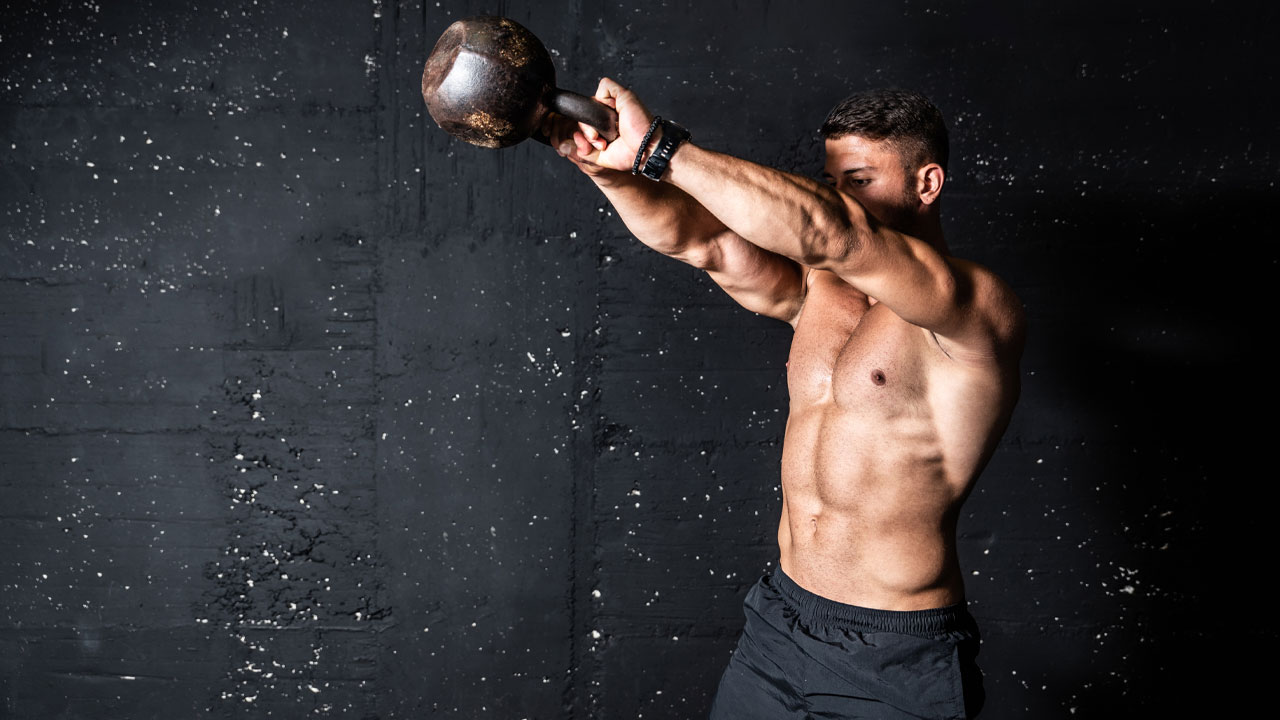The Perfect Kettlebell Swing Form

Hey Angels and Alphas,
In male and female fitness alike, the kettlebell swing has always been the ideal exercise for developing power, speed, strength, and on top of that, torching major calories. The kettlebell swing is arguably one of the best conditioning and strength exercises out there. The goal of this one simple movement is to develop power through the hips while bringing in a dynamic motion similar to jumping.
But if you want to prevent injury and make the most out of this valuable exercise, proper form is absolutely crucial from the first moment to the last. The one big takeaway from the kettlebell swing is that it’s more of a “hinge and a hike” rather than squatting and lifting something.
If you’re ready for the step-by-step approach to the perfect kettlebell swing, read on.
THE FIRST STEP: THE HINGE/DEADLIFT
To master the perfect hip hinge, you start off with your feet about shoulder-width apart. You engage your entire posture grasping the handle of the bell. With just a slight knee bend, you drive your hips backward, and you lower the kettlebell to a point just below your knees. The most important factor is to maintain the natural curve of your lumbar spine (lower back) throughout this process. Then you press your feet into the floor, you engage your glutes, and you stand with your shoulders pulled down and back.
THE SECOND STEP: THE ARM DRIVE
The good thing about mastering the hinge — which hopefully you did during your initial introduction into deadlifts — is that it carries over to your jumps, and hence, your kettlebell swings. This jump with and arm drive simply helps add more power to the hinge, preparing you for adding that weight in the next step.
With your feet close to shoulder-width apart, try to drive your arms back while simultaneously hinging around your hips. And remember, this hinge is just a minimal bend at the knees and a large one at the hips. While adding more speed, simultaneously drive your arms up all the way past your thighs while you’re unhinging your hips – and go airborne.
THE THIRD STEP: THE KETTLEBELL SWING
With the kettlebell just a few feet in front of you, make an effort to stand with your feet slightly wider than shoulder-width apart. Then hinge forward with a neutral spine, grab onto the handle of the kettlebell, and then hike it between your legs. Then rapidly extend at the hips, letting the kettlebell float in front of your shoulders.
Repeat until you reach your desired number of repetitions.
THE FOURTH STEP: THE TOWEL SWING
Now, it’s time to check your work. Consider the “towel swing” test if you want to make sure you are moving with speed and power through your hips instead of just lifting with your arms.
Begin by wrapping a hand towel around the handle of your kettlebell. While your feet are placed a little wider than shoulder-width apart and when the bell is slightly in front of you, simply hinge forward, grasp the towel with both hands and hike it between your legs. Proceed to extend your hips and stand up tall with speed and power, allowing the kettlebell to simply float in front of you at the height of your shoulders. If you did perform the swing correctly, the bell, the towel, your arms should be in line all throughout the entire movement.
THE FINAL STEP: THE RETURN
The perfect kettlebell swing cannot be completed until the bell is safely parked back onto the floor. When you are finished with your seat, you should let the kettlebell slow down, engage your core and keep your spine neutral, and simply place the bell down between your feet. At no point in this movement should your core be relaxed or your back round until the kettlebell is finally planted on the ground.





